To install a Ring Security System, first, download the app and create an account. Then, follow the instructions to connect the base station, add devices, and customize settings.
Introducing a Ring Security System into your home can provide you with added peace of mind and protection. This comprehensive system offers a range of devices including a base station, contact sensors, motion detectors, and even video doorbells. With easy installation and the ability to monitor your home from anywhere using the dedicated app, it’s no wonder that Ring has become a popular choice for many homeowners.
In this guide, we will walk you through the step-by-step process of setting up your Ring Security System. So let’s get started and ensure your home is secure with the power of Ring.
Choosing The Right Ring Security System
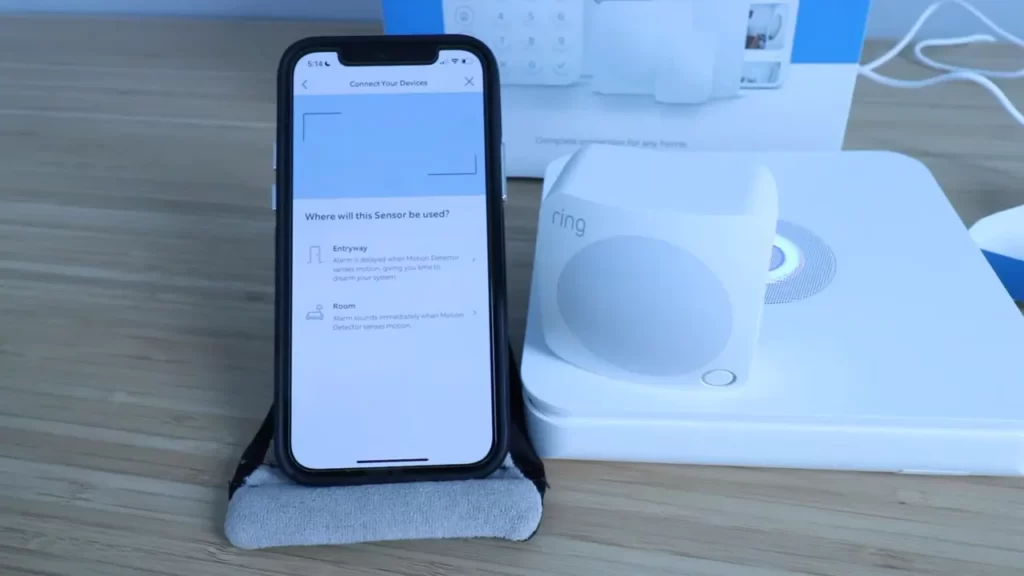
When it comes to ensuring the safety and security of your home, a Ring security system is one of the top choices on the market. But with a variety of options available, it can be overwhelming to choose the right one for your needs. In this section, we’ll discuss the factors to consider before purchasing a Ring security system, compare the features of different systems, and help you understand the compatibility and requirements of the system.
Factors to consider before purchasing a Ring Security System
Before making any purchase, it’s important to evaluate your specific requirements and needs. Here are some factors to consider:
- Size of your property: Determine the size of your property and the areas that require surveillance. This will help you select the right number of cameras and sensors.
- Budget: Set a budget that you’re comfortable with. Ring offers a range of security systems at various price points, so you can find one that aligns with your financial considerations.
- Integration with existing devices: If you have other smart home devices, ensure that the Ring security system is compatible with them to create a connected and seamless experience.
- Subscription plan: Ring offers optional subscription plans that provide additional features, such as professional monitoring and cloud storage. Consider whether these plans are necessary for your level of security needs.
- Installation: Determine whether you want a DIY installation or require professional assistance. Ring security systems are designed to be user-friendly, but if you prefer expert installation, check if it’s available in your area.
Comparing the features of different Ring Security Systems
Ring offers a range of security systems, each with its own set of features. Here’s a comparison of the key features to help you choose the right one:
| Ring Security System | Key Features |
|---|---|
| Ring Alarm 5-Piece Kit | Base station, keypad, contact sensor, motion detector, range extender |
| Ring Spotlight Cam | Built-in motion-activated spotlight, camera, two-way audio |
| Ring Doorbell Pro | HD video, two-way audio, customizable motion zones |
Beyond these examples, Ring offers a variety of other security systems, each tailored to specific needs. Consider the features that are most important to you and select a system that meets those requirements.
Understanding the compatibility and requirements of the Ring Security System
Before finalizing your purchase, it’s crucial to understand the compatibility and requirements of the Ring security system. Here are a few things to keep in mind:
- Internet connection: A stable internet connection is necessary for the Ring security system to function properly. Ensure that your Wi-Fi network is reliable and can support the system’s requirements.
- Smartphone compatibility: Most Ring security systems can be controlled through a smartphone app. Check if the app is compatible with your device’s operating system.
- Power source: Depending on the system, you may require a power outlet or battery power. Ensure that your installation location has access to the necessary power source.
By considering these compatibility and requirements factors, you can ensure a smooth installation and optimal performance of your Ring security system.
Setting Up The Ring Security System
Installing a Ring Security System is a crucial step in ensuring the safety of your home. In this guide, we will walk you through the process of setting up your Ring Security System, from unboxing and inspecting the contents of the package to pairing and installing each component. Let’s get started with the first step: unboxing and inspecting the contents of the Ring Security System package.
Unboxing and inspecting the contents of the Ring Security System package
The first step in setting up your Ring Security System is to unbox the package and carefully inspect its contents. When you open the package, you will find the following components:
| Components |
|---|
| 1. Base Station |
| 2. Keypad |
| 3. Motion Sensors |
| 4. Contact Sensors |
| 5. Range Extender |
| 6. Mounting Brackets and Screws |
| 7. Power Adapters |
Double-check each component to ensure that you have received everything mentioned in the package. In case any component is missing or damaged, reach out to the Ring support team for assistance.
Connecting the base station to the power source and internet
Once you have inspected the package and verified all the components, it’s time to connect the base station to the power source and the internet. Follow these steps:
- Find a suitable location for the base station near your home router.
- Connect the power adapter to the base station and plug it into a power outlet.
- Connect the base station to your home router using an ethernet cable.
Ensure that the base station’s LED light turns solid blue, indicating a successful connection to the internet.
Pairing and installing the Ring Security System components
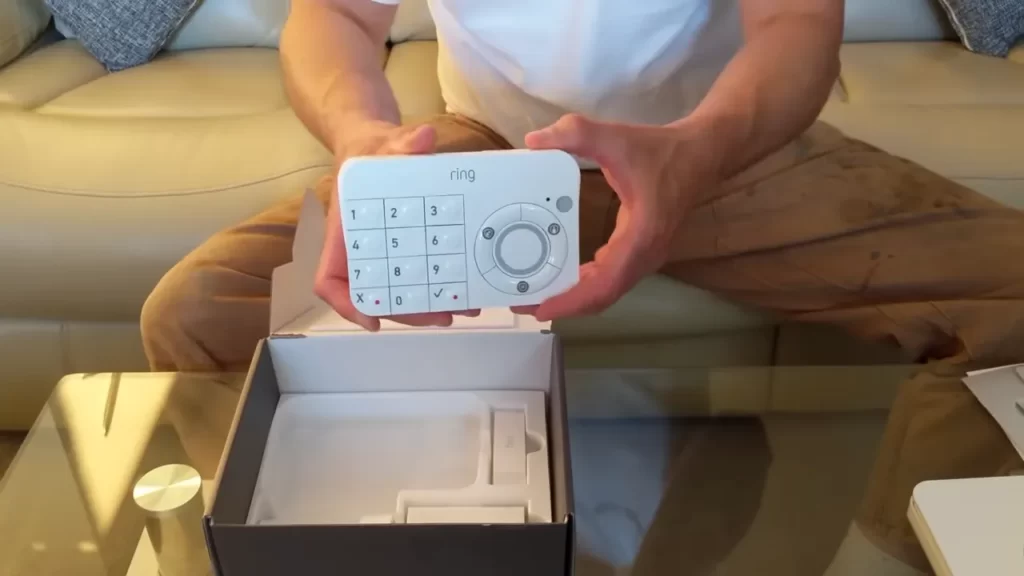
With the base station connected, it’s time to pair and install each component of the Ring Security System. Here’s what you need to do:
- Open the Ring app on your smartphone and follow the on-screen instructions to create an account or log in to your existing account.
- Select “Set up a Device” and choose the Ring Security System.
- Follow the app’s prompts to pair the keypad, motion sensors, contact sensors, and range extender with the base station.
Once the components are successfully paired, proceed to install them at strategic locations in your home. Place the motion sensors at entry points, the contact sensors on doors and windows, and the range extender in an area that optimizes coverage. You can use the provided mounting brackets and screws for installation.
By following these steps, you will have successfully set up your Ring Security System. Take your time to ensure each component is properly installed and tested for functionality. Now you can enjoy the peace of mind that comes with a reliable and efficient home security system.
Installing The Ring Doorbell
When it comes to securing your home, the Ring Doorbell is a popular choice. Not only does it provide a convenient way to answer your door from anywhere, but it also acts as a deterrent for potential intruders. Installing the Ring Doorbell is a key step in setting up your Ring security system. In this section, we will guide you through the process of positioning the Ring Doorbell correctly, mounting it on the exterior wall or doorframe, and connecting it to your Wi-Fi network.
Positioning the Ring Doorbell correctly for optimal security coverage
Positioning the Ring Doorbell is vital for ensuring optimal security coverage. To get the most out of your Ring Doorbell, follow these guidelines:
- Place the Ring Doorbell at a height of 48 inches from the ground, providing an optimal viewing angle.
- Ensure that the doorbell is facing towards the approach path to your front door, offering a clear view of anyone who comes near your home.
- Avoid positioning the doorbell in a place where it may be easily tampered with or obstructed by objects such as plants or other decorations.
Mounting the Ring Doorbell on the exterior wall or doorframe
Mounting the Ring Doorbell securely is essential for its proper functioning. Follow these steps to mount the Ring Doorbell on your exterior wall or doorframe:
- Use the provided wall mount and screws to attach the mounting bracket to the desired location.
- Ensure the mounting bracket is level using a bubble level.
- Connect the wires from your existing doorbell or use the provided battery pack for wireless operation.
- Align the doorbell with the mounting bracket and slide it into place until it clicks.
- Tighten the security screws to secure the doorbell in place.
Connecting the Ring Doorbell to your Wi-Fi network and configuring settings
Before you start using your Ring Doorbell, it needs to be connected to your Wi-Fi network and configured with the desired settings. Follow these steps to ensure a smooth setup process:
- Open the Ring app on your smartphone and follow the on-screen instructions to add a new device.
- Select the Ring Doorbell model you have and enter the required details.
- Once prompted, press the setup button on the Ring Doorbell to put it into setup mode.
- Connect your smartphone to your home Wi-Fi network and wait for the app to detect the Doorbell.
- Follow the prompts to connect the Ring Doorbell to your Wi-Fi network and configure settings such as motion detection sensitivity and notification preferences.
- Once the setup is complete, test the functionality of your Ring Doorbell by pressing the doorbell button and confirming that live video and audio are properly transmitted to your smartphone.
By following these steps, you can successfully install your Ring Doorbell and start enjoying the added security and convenience it provides. With the Ring Doorbell in place, you can monitor your doorstep, communicate with visitors, and ensure the safety of your home, all from the palm of your hand.
Mounting Indoor And Outdoor Cameras
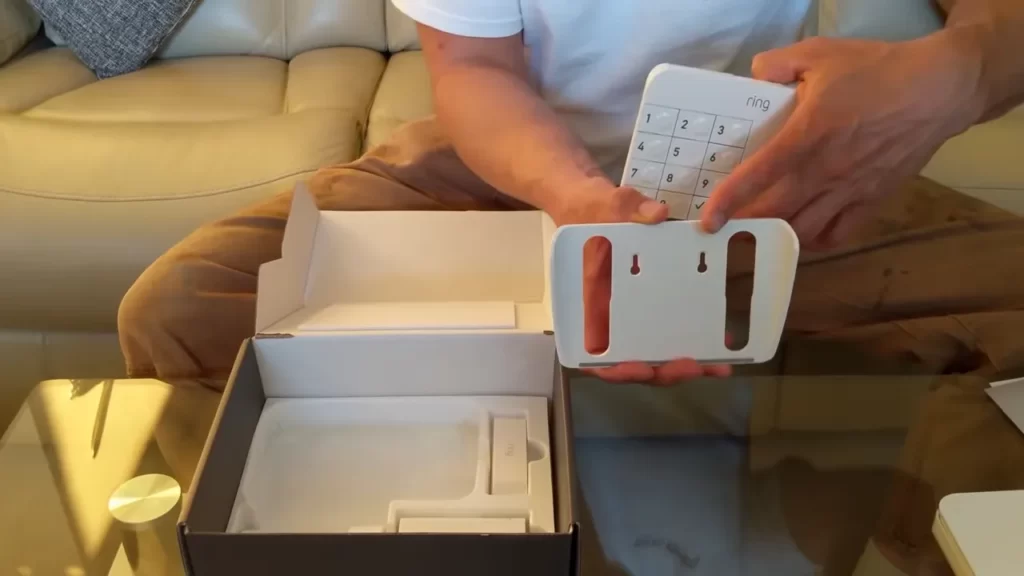
Installing a Ring Security System is a crucial step towards enhancing the safety and security of your home. One of the most important aspects of setting up your system is mounting the indoor and outdoor cameras properly. In this section, we will guide you through the process of identifying the ideal locations for installing the cameras, securely mounting them using the provided brackets and screws, and adjusting their angles and settings for maximum coverage and effectiveness.
Identifying the ideal locations for installing indoor and outdoor cameras
Before you begin mounting your Ring indoor and outdoor cameras, it is essential to identify the optimal positions for installation. This includes considering the vulnerable areas of your home and focusing on areas where potential threats are likely to occur. Here are a few factors to keep in mind when determining the ideal camera locations:
- Entry points: Place cameras near doors, windows, and garage entrances to monitor any suspicious activity.
- High-traffic areas: Install cameras in areas with high foot traffic, such as hallways or living rooms, to ensure maximum coverage of your house.
- Backyard and driveway: Monitor your outdoor spaces by placing cameras overlooking the backyard, driveway, or any other areas where you want to keep a close eye on.
- Blind spots: Identify any blind spots where intruders could potentially hide and aim to cover these areas with cameras.
Mounting the cameras securely using the provided brackets and screws
Once you have determined the ideal locations for your Ring indoor and outdoor cameras, it’s time to mount them securely. Follow these steps to ensure a sturdy installation:
- Start by removing the mounting bracket from the camera.
- Choose the desired location and mark the spots for screw holes on the wall.
- Drill pilot holes for the screws using an appropriate drill bit.
- Attach the mounting bracket to the wall using the provided screws.
- Place the camera onto the bracket and secure it tightly using the locking screw.
- Ensure the camera is aligned properly and adjust its position if necessary.
Adjusting camera angles and settings for maximum coverage and effectiveness
Once your cameras are mounted securely, it’s important to adjust their angles and settings to maximize their coverage and effectiveness. Follow these tips:
- Use the Ring app to access the camera settings and customize features like motion detection sensitivity, notification settings, and video recording preferences.
- Ensure the camera is positioned to capture the desired field of view. This may involve angling the camera downwards or adjusting its tilt and pan settings.
- Regularly check and clean the camera lenses to maintain clear and uninterrupted video footage.
- Consider installing additional mounts or accessories, such as corner or ceiling mounts, to achieve better camera angles in specific areas.
By following these steps to mount your indoor and outdoor cameras, as well as adjusting their angles and settings, you can ensure that your Ring Security System functions at its best, providing you with peace of mind and enhanced home security.
Placing Motion Sensors And Contact Sensors
Placing motion sensors and contact sensors in the right positions is crucial when it comes to securing your home with a Ring Security System. These sensors play a key role in detecting any unauthorized activity and triggering the alarm, alerting you of a potential break-in. In this section, we will discuss how to determine the best positions for motion and contact sensors, as well as the steps to install them effectively.
Determining the best positions for motion and contact sensors
Before you start the installation process, it’s important to determine the optimal positions for both motion sensors and contact sensors. This will ensure that they cover the areas where you want to monitor and protect.
When it comes to motion sensors, you should consider placing them in areas where there is a high likelihood of movement. Common locations include the entrance hallway, living room, and any other areas that serve as main access points within your home. By strategically placing motion sensors, you can effectively monitor these key areas for any movement, providing you with added peace of mind.
On the other hand, contact sensors are designed to monitor specific points of entry such as doors and windows. Mounting contact sensors on these openings will provide an additional layer of security to your home, as they will trigger the alarm if someone tries to open or tamper with them. Ensure that every door and window on the ground floor, as well as any vulnerable entry points on other floors, are equipped with contact sensors to safeguard your home.
Installing motion sensors to monitor specific areas for movement
Once you have determined the best positions for motion sensors, it’s time to move on to the installation process. Follow these simple steps:
- Start by selecting the suitable location for the motion sensor. This could be an upper corner of a room or a hallway wall. Make sure it has a broad view of the area you want to monitor.
- Use screws or adhesive tape to secure the motion sensor in place. If you’re using screws, use a drill to create pilot holes before screwing the sensor in.
- Ensure that the sensor is aligned properly and levelled. This will ensure accurate detection and minimize false alarms.
- Finally, sync the motion sensor with your Ring Security System by following the instructions provided with the device. This step will enable the sensor to communicate with the base station and trigger the alarm when necessary.
Mounting contact sensors on doors and windows for added security
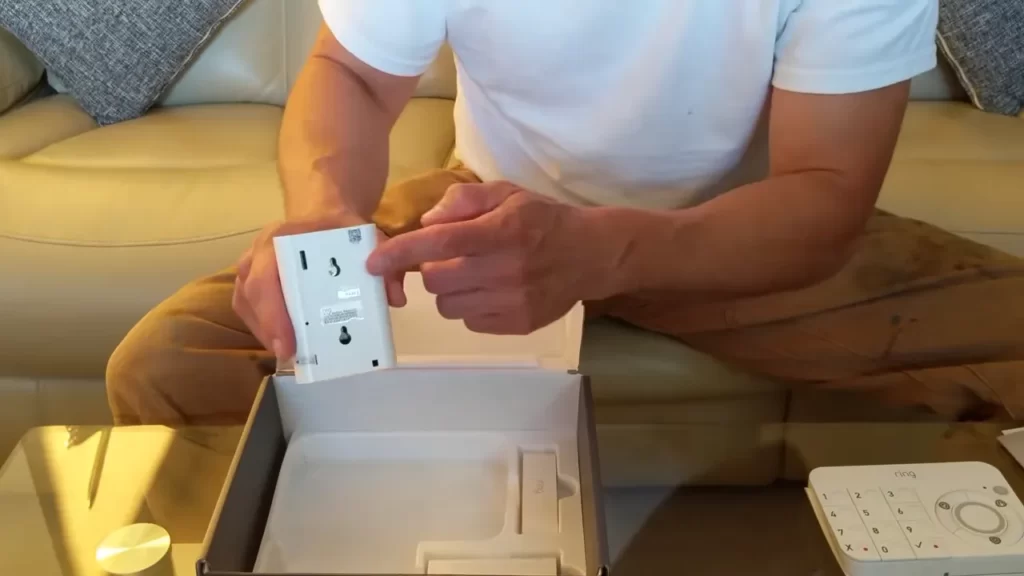
Mounting contact sensors on doors and windows is another pivotal step in securing your home. Here’s how to install them:
- Select the location for the contact sensor on the door or window frame. Typically, the sensor should be positioned on the side facing the door or window when closed.
- Peel off the adhesive backing from the contact sensor and firmly press it onto the desired location.
- Ensure that the sensor is aligned properly with its corresponding magnet. They should be close enough so that they are able to make contact when the door or window is closed, but not so close that they are constantly touching.
- Repeat these steps for every door and window you want to secure with a contact sensor.
By following these guidelines, you can successfully place motion sensors and contact sensors in the optimal positions throughout your home, enhancing the overall security provided by your Ring Security System. Take the time to carefully plan their placement, and enjoy the peace of mind that comes with knowing your home is well-protected.
Configuring And Monitoring The Ring Security System
Configuring and Monitoring the Ring Security System
Setting up and configuring your Ring Security System is a crucial step to ensure the safety of your home. Once you have installed all the necessary components, you will need to configure and monitor the system using the Ring app on your smartphone or tablet. In this section, we will guide you through the process of setting up the app, pairing the security system with the app, and customizing various settings to meet your preferences.
Setting up the Ring app on your smartphone or tablet
To get started, you need to download and install the Ring app on your smartphone or tablet. The app is available for both iOS and Android devices and can be downloaded from the respective app stores. Once installed, open the app and follow the on-screen instructions to create a new account or sign in to your existing Ring account.
Pairing the Ring Security System with the app for remote control and monitoring
After successfully setting up the Ring app, it’s time to pair your Ring Security System with the app for remote control and monitoring. Locate the Base Station and ensure that it is powered on and connected to your home network. Open the Ring app and navigate to the Devices section. Tap on “Add a Device” and follow the prompts to connect your Base Station with the app. The app will guide you through the pairing process, which involves scanning a QR code on the Base Station or entering a unique serial number.
Customizing settings and preferences for notifications and alerts
Once you have paired your Ring Security System with the app, you can start customizing settings and preferences to suit your needs. The app allows you to adjust various settings such as motion detection sensitivity, activity zones, and camera recording modes. You can also enable or disable notifications and alerts for different events, such as motion detection, doorbell rings, or when the alarm is triggered. Take your time to explore the app’s settings and customize them to ensure that you receive notifications and alerts that are relevant to you.
In conclusion, configuring and monitoring your Ring Security System is a vital part of ensuring the safety and security of your home. By setting up the Ring app on your smartphone or tablet, pairing the security system with the app, and customizing the settings to your preferences, you can have full control and peace of mind knowing that your home is protected.
Troubleshooting And Maintenance
Troubleshooting and maintenance are essential aspects of ensuring that your Ring Security System functions optimally. By familiarizing yourself with common issues, understanding warning and error messages, and performing regular maintenance, you can address any problems that arise and keep your system in top shape. This section will guide you through troubleshooting common issues during installation and setup, understanding the different warning and error messages of the Ring Security System, and performing regular maintenance and updates for optimal performance.
Troubleshooting common issues during installation and setup
During the installation and setup of your Ring Security System, you may encounter some common issues that can be easily resolved. Below are some troubleshooting tips to help you overcome these challenges:
1. Device connectivity issues:
- Ensure that your Ring devices are in range of your Wi-Fi network.
- Check if there are any physical obstacles that might affect the signal strength.
- Restart your router and try reconnecting the devices.
2. Power-related problems:
- Make sure that your Ring devices are properly powered and have sufficient battery life.
- Check if the power outlets or USB ports you are using are functioning correctly.
- Consider using a Ring Solar Panel or a Ring Power Adapter for a reliable power source.
3. Configuration issues:
- Double-check that you have followed the setup instructions correctly.
- Ensure that your Ring devices are properly connected to your Ring account via the Ring app.
- Reset your devices and try the setup process again if necessary.
Understanding the different warning and error messages of the Ring Security System
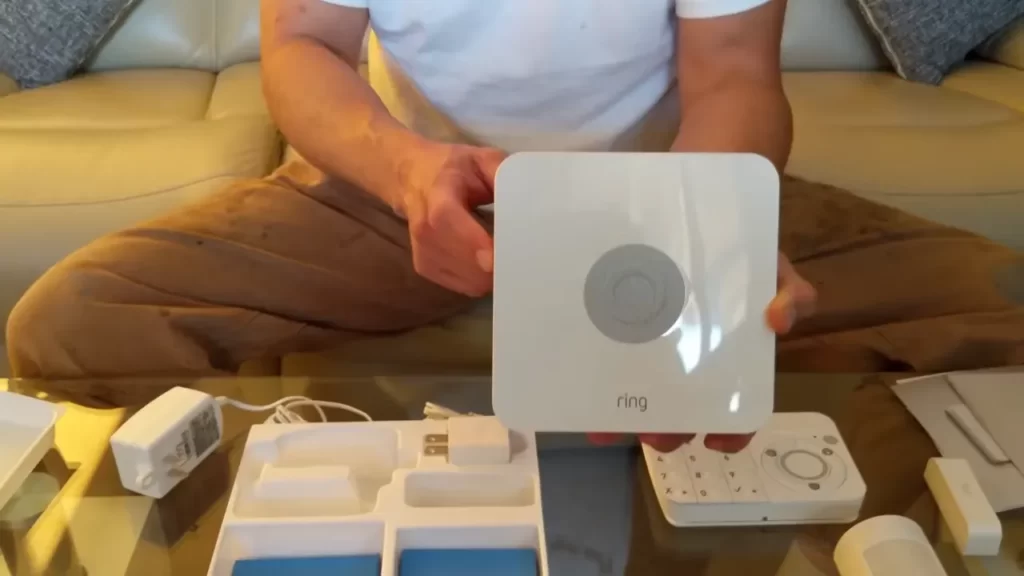
The Ring Security System provides warning and error messages to alert you of any issues that may arise. It is important to understand what these messages mean in order to take appropriate action. Here are a few common warning and error messages you may encounter:
| Message | Possible Cause | Solution |
|---|---|---|
| Low battery | The battery of your device is running low. | Replace or recharge the battery as instructed by Ring. |
| Device offline | The device is not connected to the internet or there is a connectivity issue. | Check the Wi-Fi connection and reconnect the device if necessary. |
| Motion detection failed | The device failed to detect motion. | Adjust the device’s motion settings and ensure that it is properly positioned. |
Performing regular maintenance and updates for optimal performance
Regular maintenance and updates are crucial for keeping your Ring Security System running smoothly. Follow these steps to ensure optimal performance:
1. Check for firmware updates:
- Regularly check for firmware updates for your devices through the Ring app.
- Install any available updates to benefit from new features and bug fixes.
2. Clean your devices:
- Periodically clean your devices’ lenses, sensors, and other components with a soft, lint-free cloth.
- Remove any dust, dirt, or smudges that may interfere with the device’s functionality.
3. Test your devices:
- Perform regular testing of your Ring devices to ensure they are functioning as expected.
- Test motion detection, video recording, and other features to verify their reliability.
4. Review your system settings:
- Periodically review and adjust your system settings according to your specific needs.
- Check notifications, motion zones, and other configurations to optimize your system’s performance.
By following these troubleshooting and maintenance practices, you can ensure that your Ring Security System operates smoothly and provides the protection and peace of mind you desire.
Enhancing The Ring Security System
Installing a Ring Security System is a smart decision to protect your home and loved ones. But did you know that there are several ways to enhance the capabilities of this already impressive system? In this section, we’ll explore additional features, accessories, and integrations that can take your Ring Security System to the next level. Stay tuned as we dive into the world of advanced security settings and options offered by Ring!
Exploring Additional Features and Accessories
Ring Security System offers a range of additional features and accessories that can further enhance the security of your home. Let’s take a closer look:
1. Ring Spotlight Cam
The Ring Spotlight Cam is a powerful outdoor camera that not only provides HD video recording but also features motion-activated LED spotlights and a built-in siren. This versatile device acts as a proactive deterrent, ensuring any potential intruders think twice before approaching your property.
2. Ring Video Doorbell
The Ring Video Doorbell replaces your traditional doorbell and allows you to monitor your front doorstep from anywhere. With its two-way audio and HD video capabilities, you can see, hear, and speak to visitors in real-time, even when you’re not at home. It provides an additional layer of security and convenience for your household.
Integrating the Ring Security System with Other Smart Home Devices and Platforms
Ring Security System seamlessly integrates with other smart home devices and platforms, allowing you to create a comprehensive and connected home security system. Here are a few examples:
1. Works with Alexa
By connecting your Ring Security System with Alexa, you can control your cameras, doorbells, and alarm systems with simple voice commands. Whether it’s checking your live camera feed or arming your system before bed, Alexa makes it quick and convenient.
2. Smart Lock Integration
For enhanced security and convenience, you can integrate your Ring Security System with compatible smart locks. This integration enables you to lock or unlock your doors remotely, let in guests, and receive notifications whenever your doors are accessed.
Understanding Advanced Security Settings and Options Offered by Ring
To maximize the effectiveness of your Ring Security System, it’s important to explore and understand its advanced security settings and options. Here are some key features to familiarize yourself with:
1. Customizable Motion Zones
Ring allows you to customize motion zones, so you only receive alerts for areas that matter most to you. Whether it’s your front yard, driveway, or backyard patio, you can fine-tune the sensitivity and coverage to ensure you’re alerted when it truly matters.
2. Emergency Response Plans
Ring offers optional emergency response plans for added peace of mind. With these plans, trained professionals can contact the appropriate emergency services on your behalf when an alarm is triggered, ensuring that help arrives swiftly when you need it most.
With a variety of additional features, integrations, and advanced settings, the Ring Security System empowers you with complete control over your home’s security. Take advantage of these enhancements and protect your home like never before!
Frequently Asked Questions On How To Install A Ring Security System
Is It Easy To Install Ring Security System?
Installing a Ring security system is easy. It doesn’t require any technical skills. Simply follow the provided instructions for easy installation.
What Do You Need To Install A Ring System?
To install a Ring system, you’ll need the following: a Ring device (such as a doorbell or security camera), a compatible smartphone or tablet, a stable Wi-Fi connection, the Ring app, and a Ring Protect subscription for advanced features like video recording and saving.
Does Ring Security Need To Be Wired?
No, Ring security does not need to be wired. It can be easily installed without any complicated wiring process.
What Do I Need To Start A Ring Security System?
To start a Ring security system, you’ll need a few essentials. First, a Ring device such as the doorbell or camera. Then, a stable Wi-Fi connection for the device to connect to. Next, a smartphone or tablet to control and monitor the system.
Lastly, a Ring account for setting up and managing your security system.
Can I Install The Ring Security System Myself?
Yes, installing a Ring Security System is designed to be a DIY project, so you can easily set it up yourself without professional help.
Conclusion
Installing a Ring Security System is a simple and effective way to protect your home. By following the step-by-step guide outlined in this blog post, you can easily set up the system and ensure the safety of your property and loved ones.
With its user-friendly interface and powerful features, the Ring Security System offers peace of mind and convenience. Don’t wait any longer – start securing your home today!
